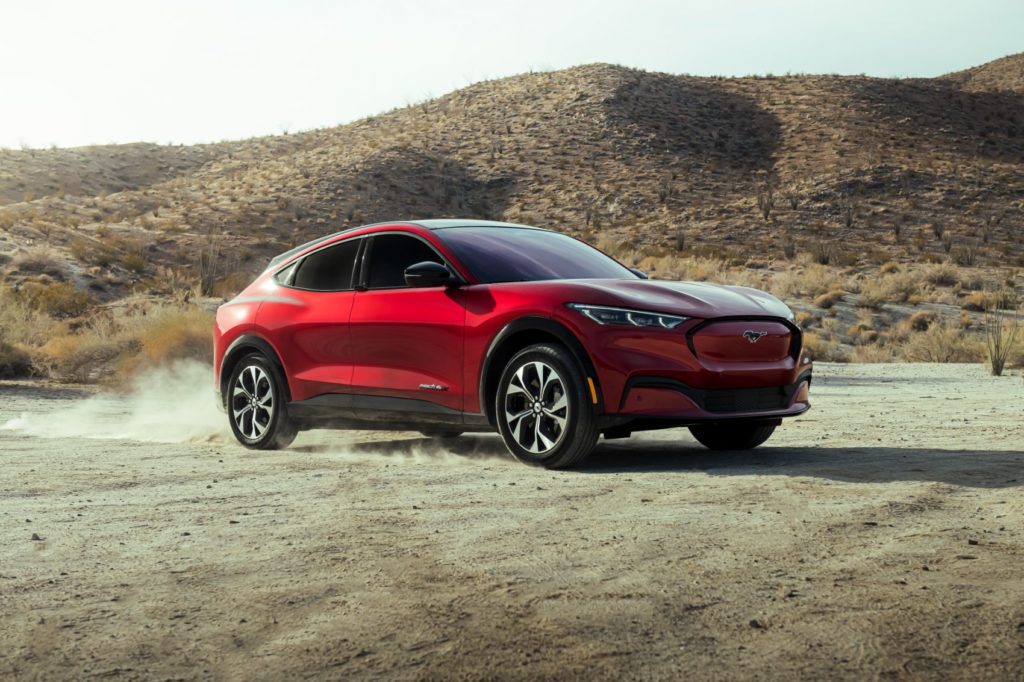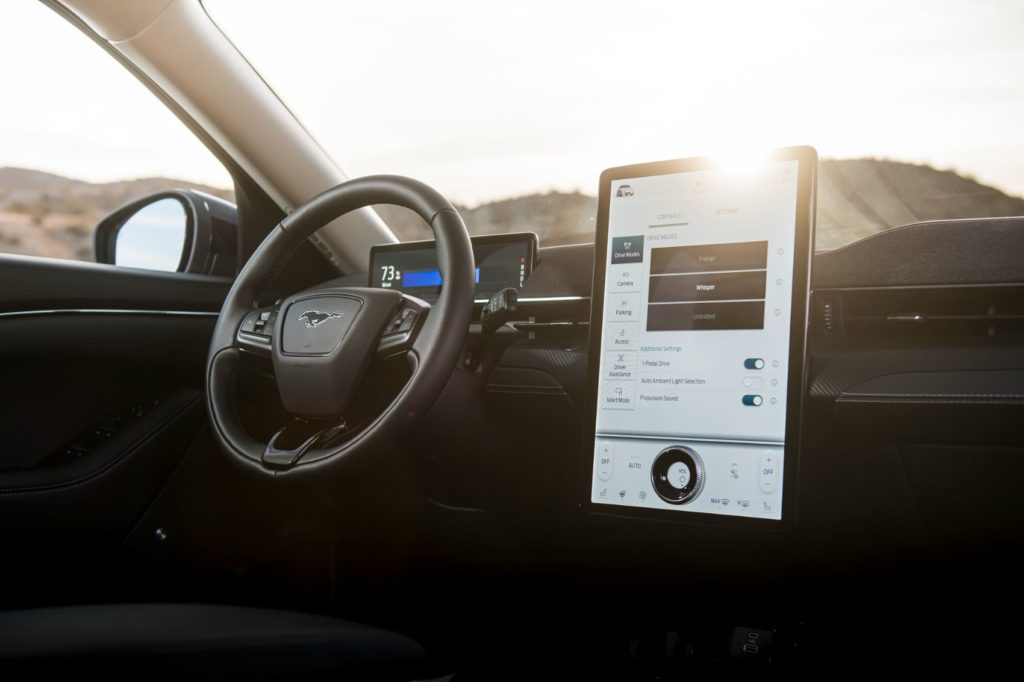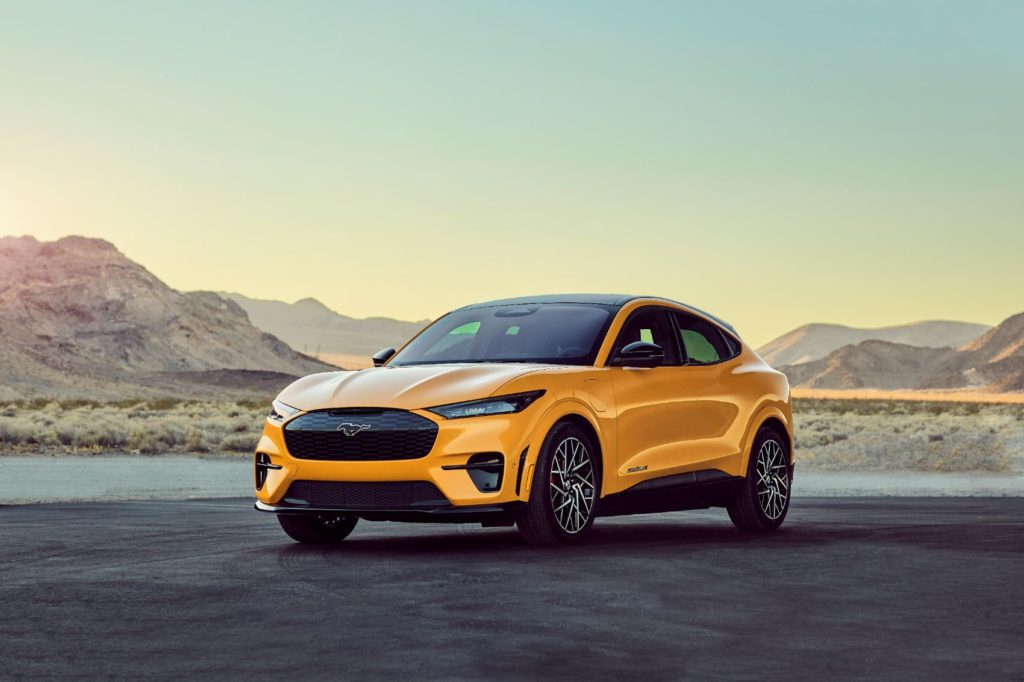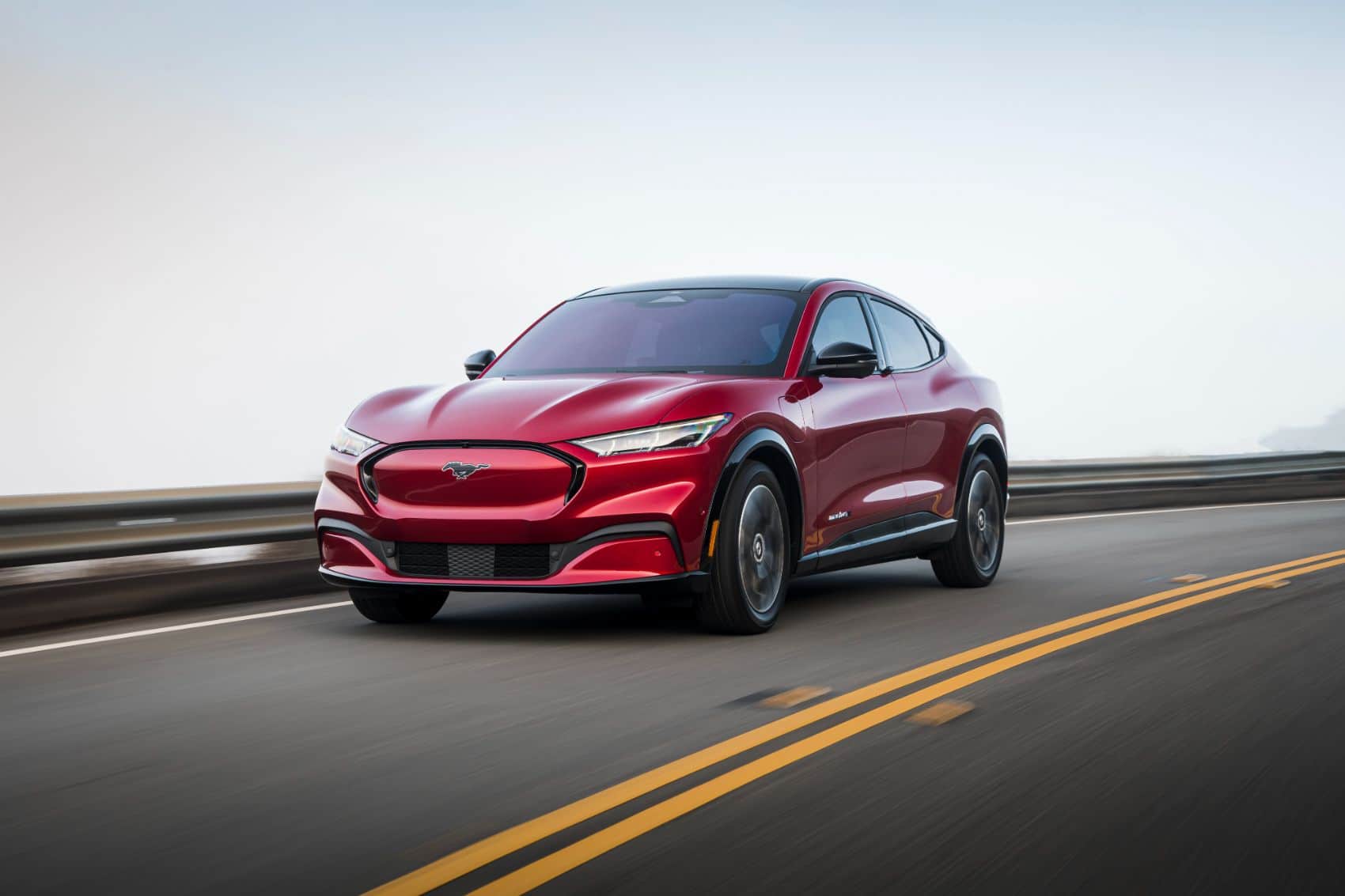The 2022 Ford Mustang Mach-E is entering its second year of production as an excellent all-rounder in the burgeoning and competitive EV category. The Mustang Mach-E is not the fastest, most powerful, nor has it the highest available range. It’s certainly not the most affordable either, as the Tesla Model 3 and VW ID.4 have lower MSRPs than a base Mustang Mach-E.
What’s more, purists may have issues with the Mustang name, and it’s the first time in over five decades that Ford expanded the Mustang family to include a slightly high-riding crossover. You can call it a marketing stunt, but the Mustang Mach-E remains an excellent choice whether you want a new EV or are looking to get your feet wet in the electrified genre.
2022 Ford Mustang Mach-E: What’s New?
The Ford Mustang Mach-E was unveiled in late 2019 and is still a relatively new model. However, Ford has increased the usable battery capacity for both the Standard Range and Extended Range batteries. Initially available with either a 68 kWh and 88 kWh battery, all 2022 Mach-E models now have a 70.0 kWh (Standard) or 91.0 kWh (Extended) battery.
Of course, more battery capacity means more usable range, but the EPA has yet to determine the 2022 Mach-E’s estimated range, so we’ll be sticking to the initial EPA figures for now (detailed more below). Other changes include a new AWD option for the California Route 1 trim, more standard features, new paint colors, and an Ice White Edition for the Premium trim.

2022 Mustang Mach-E Trim Levels
The 2022 Ford Mustang Mach-E is available in five trim levels, single (RWD) or dual (e-AWD) electric motors, and two battery packs. Here’s a breakdown of each trim model.
Mustang Mach-E Select
The base Mach-E Select is available only with the 70.0kWh Standard Range battery in either RWD or e-AWD. The RWD version has 266 horsepower, 317 lb-ft. of torque, and 230 miles of range. The e-AWD model has 266 horsepower, 428 lb-ft. of torque, and 211 miles of range.
Standard features for the Mach-E Select include LED headlights with automatic high beams, body-color side mirrors, 18-inch wheels, wireless smartphone charging, a 15.5-inch infotainment touchscreen (with Apple CarPlay and Android Auto connectivity), and a six-speaker audio system, among many others.
All trim versions of the Mustang Mach-E come standard with Ford Co-Pilot360 driving aids like adaptive cruise control, blind-spot monitoring, lane centering, frontal collision mitigation, and rear parking sensors.
Mustang Mach-E Premium
The Mustang Mach-E Premium is available in RWD or e-AWD with the Standard Range battery, good for 230 miles and 211 miles of range, respectively, with similar power figures as the base model. However, you can also get RWD with the Extended Range battery, which gives you 290 horsepower, 317 lb-ft. of torque, and 300 miles of range. You can also get an e-AWD model with the Extended Range battery, good for 346 horsepower, 428 lb-ft. of torque, and 270 miles of range.
Standard features include 19-inch wheels, power-folding mirrors, a panoramic glass roof, Ford’s Blue Cruise autonomous driving feature, a hands-free liftgate, heated front seats, a heated tiller, LED interior ambient lighting, and a Bang & Olufsen audio system with 10 speakers.

Mustang Mach-E California Route 1
The Mach-E California Route 1 was initially available with RWD and the Extended Range battery pack. In that configuration, it has 290 horsepower, 317 lb-ft. of torque, and 305 miles of usable range. For 2022, you can now get a Mach-E California Route 1 with e-AWD, although the specs remain forthcoming as of this writing.
The Mustang Mach-E California Route 1 has black wheels, a panoramic glass roof, automated parking, driver-seat memory settings, surround-view camera, and Ford’s Blue Cruise autonomous driving feature.
Mustang Mach-E First Edition
The Mustang Mach-E First Edition will arrive in limited numbers, but all will receive the Extended Range battery pack with e-AWD. In this configuration, you have 346 horsepower, 428 lb-ft. of torque, and 270 miles of range. The First Edition has similar equipment as the Premium trim, but it does get unique touches like painted brake calipers, fancy interior stitching, and bespoke First Edition scuff plates.
Mustang Mach-E GT & GT Performance Edition
The Mustang Mach-E GT is available with an Extended Range battery and e-AWD with 480 horsepower, 600 lb-ft. of torque, and 270 miles of range. Meanwhile, the GT Performance Edition has the same horsepower but more torque (634 lb-ft.) and a slightly lower range (260 miles).
Standard equipment for the Mach-E GT includes 20-inch wheels wrapped in performance tires, a sport-tuned suspension, blacked-out front grille, body-color fenders, and sport front seats with thicker bolsters and microfiber accents. The GT Performance Edition rides on bespoke 20-inch wheels with an adaptive suspension.

How Fast Is The 2022 Ford Mustang Mach-E?
The quickest are the GT and GT Performance trims. The former goes from zero to 60 mph in 3.8 seconds, while the latter does the same in 3.5 seconds. The top speed for both is 124 mph. In comparison, the Tesla Model Y Long Range goes from zero to 60 mph in 4.8 seconds and has a top speed of 135 mph, while the Model Y Performance accelerates to 60 mph in 3.5 seconds and has a 155 mph top speed.
Mustang Mach-E Warranty
The 2022 Ford Mustang Mach-E has a three-year/36,000-mile bumper-to-bumper warranty. Also included is an eight-year/100,000-mile warranty for the electric components. You have options available when it comes to extending the warranty on any new Ford vehicle. Before you make a decision, see this helpful guide first.
2022 Ford Mustang Mach-E Pricing
The 2022 Ford Mustang Mach-E Select starts at $43,995, while the Premium is at $49,200. The California Route 1 trim has base prices at $51,875, while the GT and GT Performance Edition start at $61,095 and $66,095, respectively.
The order books are now open for the 2022 Ford Mustang Mach-E. However, the first deliveries won’t arrive until February (Select and California Route 1) and April (Premium and GT) of next year.
Alvin Reyes is an Automoblog feature columnist and an expert in sports and performance cars. He studied civil aviation, aeronautics, and accountancy in his younger years and is still very much smitten to his former Lancer GSR and Galant SS. He also likes fried chicken, music, and herbal medicine.
Photos & Source: Ford Motor Company.


